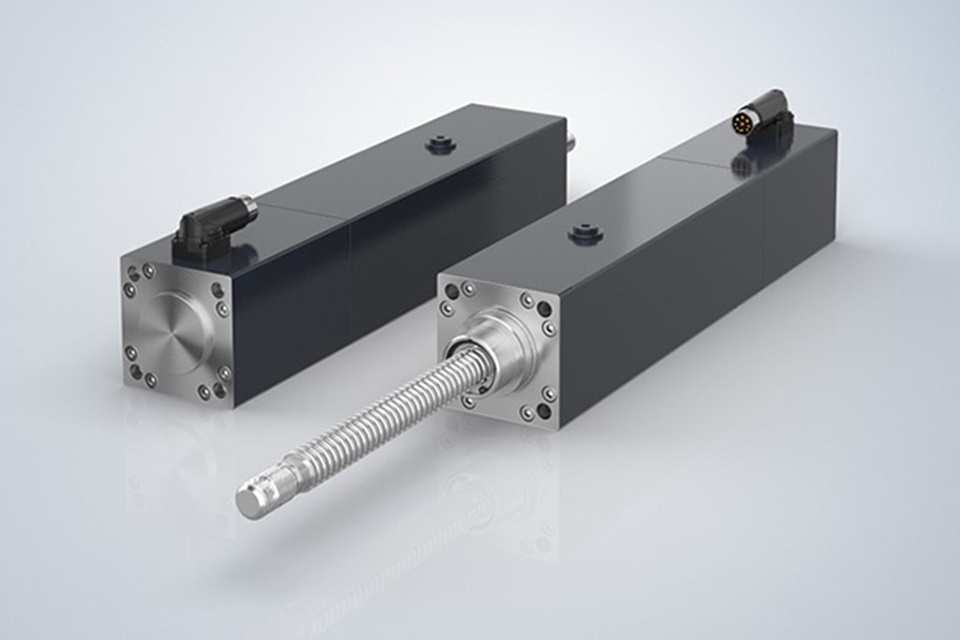Industrial automation processes rely on feedback from position sensors to ensure that actuators (electrical, hydraulic, or pneumatic) never extend or retract beyond their stroke limits. This is important for CNC tools, pneumatic cylinders, and robotic end-of-arm tooling.
Linear position sensors come in various mechanical styles and mounting configurations but share specific characteristics. To select the best sensor, industrial buyers must evaluate performance specifications and output types.
Table of Contents
Precision
Using non-contact methods, linear position sensors measure the speed or distance of movement. This data is then converted into a measurement of position or displacement.
This position information can be interpreted as a proportional analog signal as a DC voltage or current, a digital output, or an on/off status change sent over a network to be interpreted by a PLC or computer. Some linear position sensors may offer additional features like vibration and fluid protection.
Industrial buyers should consider their application’s key functionality when determining which linear sensor technology to select. This will help them weigh the different performance specifications and features against the application’s overall requirements, including reliability, quality, and installed cost.
Repeatability
The repeatability of a sensor-based measurement system refers to its ability to repeat trials of a given mechanical input within a controlled environment. This specification is sometimes referred to as accuracy, trueness, or precision.
Linear position sensors use a linear wiper in either contact or non-contact mode to measure an application’s linear movement and convert it to an analog output signal. They are available in several body styles that determine mounting characteristics and physical compatibility.
For example, rod-type sensors have a mechanical rod that moves a wiper on an internal track. Touchless sensors have a magnetic marker that glides across an external track. They are also available in various output signal types and stroke lengths.
Accuracy
When selecting a linear position sensor for a system, industrial buyers need to understand the performance specifications that matter. Range defines the distance the device can measure, and resolution determines the size of the minor change it can detect. Both are important metrics, but they must be balanced against other requirements impacting system complexity, cost, and development time.
Linear inductive position sensors are durable, long-lived devices that can accurately measure stroke movement for both hydraulic and pneumatic cylinders in harsh environments. Integral to hydraulic systems, these sensors work alongside vital components like hydraulic hoses, which transport the fluid necessary to power the system, and hydraulic pumps, which generate the force required to move the fluid. Along with valves that control the flow and pressure, these elements form the core of hydraulic machinery. High-quality hydraulic components, including durable hoses and reliable valves, must be considered to ensure the system’s overall efficiency, safety, and longevity.
The sensors divide an applied voltage proportionally over their operating range and then generate a signal based on where the slider inside the case is located. This provides the ECU with data that helps it control piston speed and directional movement, ensuring the precision and efficiency of the entire hydraulic system. By operating without the mechanical wear problems associated with draw wire sensor styles and offering a choice of outputs, including discrete, pulse-width modulated (PWM), and serial, these sensors maintain the reliability and functionality of hydraulic systems in various demanding applications.
Flexibility
Many technical issues must be considered when selecting the proper position sensor technology for any application. The most important of these are those that address the balance of price-to-performance.
Linear position sensors offer a broad spectrum of performance parameters to satisfy nearly every application requirement. While some of these can be measured without any movable part and are more akin to a qualitative measurement, most require at least some contact with the element whose linear position is being measured.
One of the simplest and cheapest solutions is the rod-type linear position sensor, which uses a mechanical rod to move a wiper along an internal resistive track. Touchless linear position sensors use magnetic markers that glide or float over an internal track. Other alternatives include linear potentiometers, which utilize a conductive plastic resistance element to generate an output voltage proportional to the input displacement. These are available in single and multi-turn versions and can be configured for analog or digital output.



